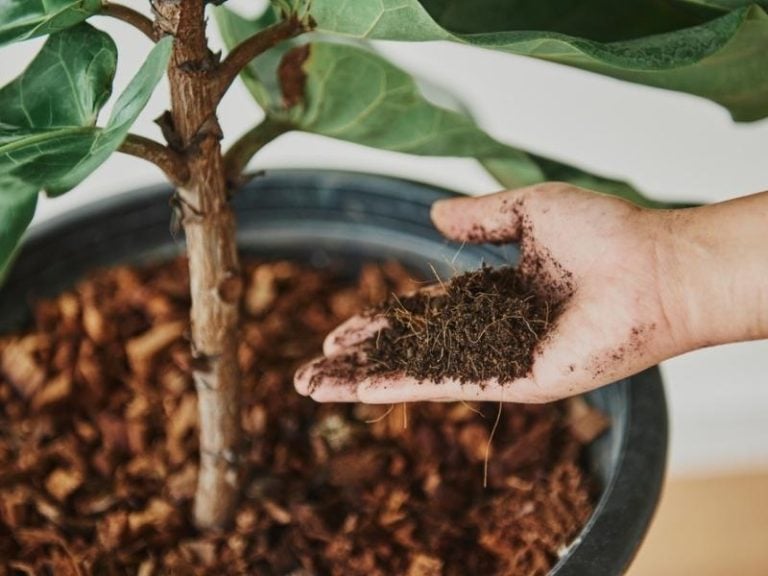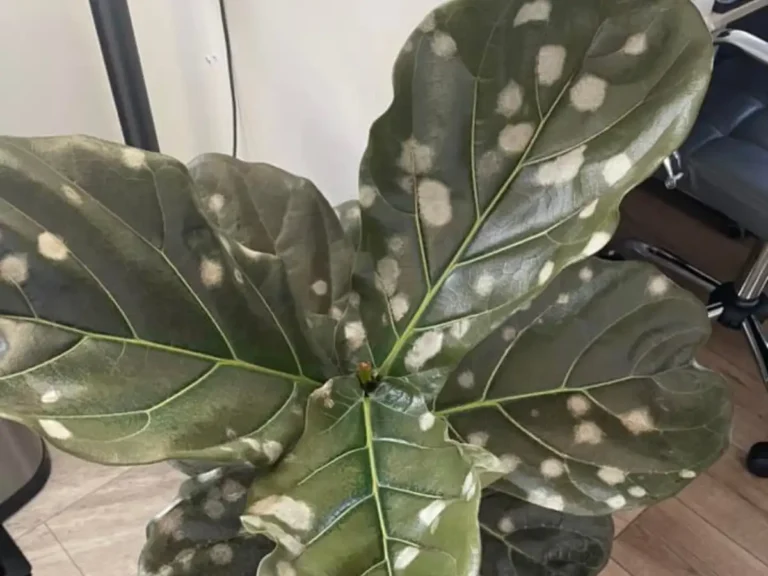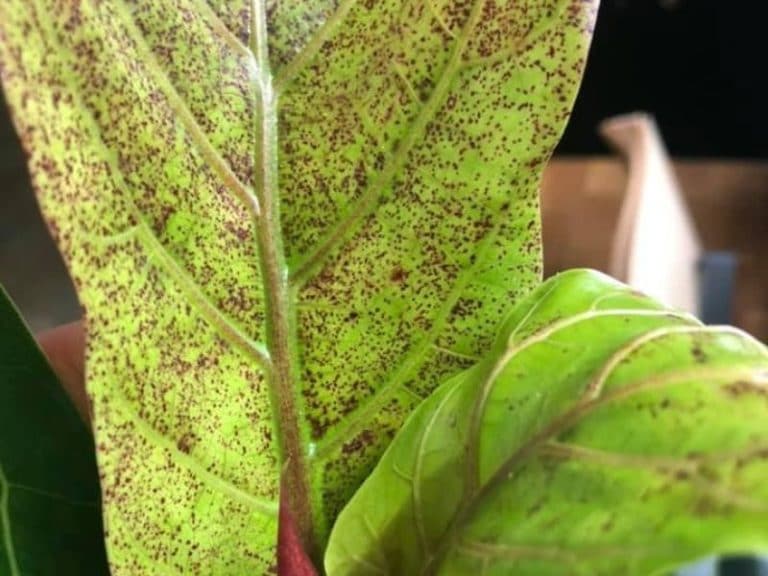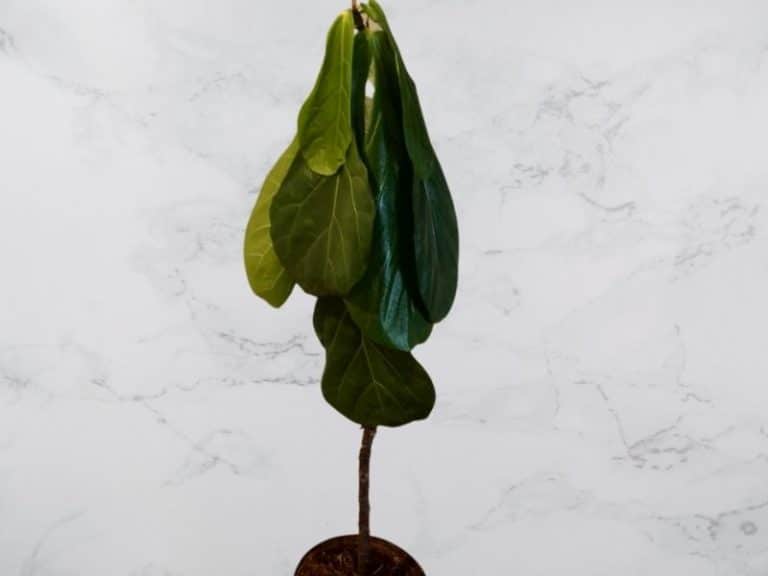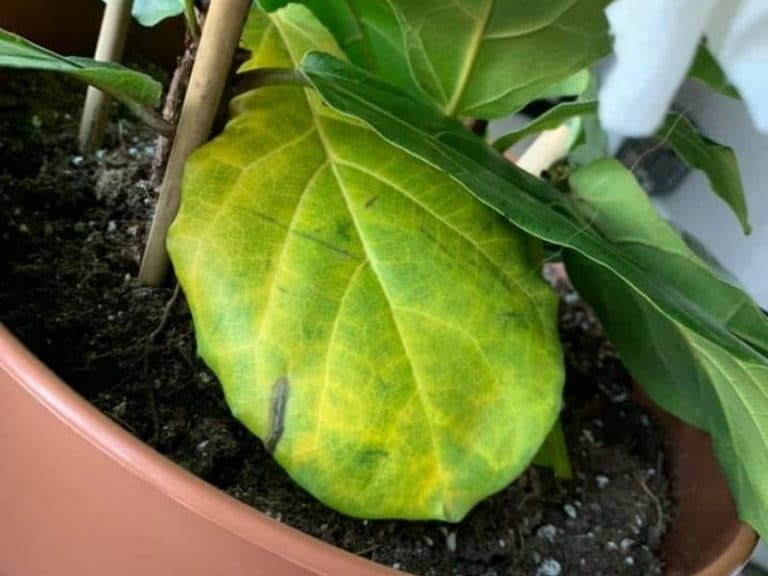How to Treat Fiddle Leaf Fig Bacterial Infection
Fiddle leaf figs have characteristically big green leaves that can appear shiny and attractive when grown in plenty of natural light, warm weather, and moist soil. However, the leaves can develop unusual spots and discolorations due to bacterial infections and improper care. It’s important to identify the actual problem to be able to fix it effectively.
Signs of bacterial infection in fiddle leaf figs
The signs of bacterial infections in fiddle leaf fig trees can be confusing because they are a lot similar to those of poor care practices such as overwatering, underwatering, and insufficient light. Overall, leaves develop spots and discolorations, and the plant appears generally unhealthy.
Here are the signs of bacterial infections in fiddle leaf figs:
Irregular brown spots on the leaves
Bacterial infections enter the leaves through the stomatal openings and cause many small yellow or brown spots on the foliage. The circular lesions are usually water-soaked and can appear irregularly distributed on the leaves of your fiddle leaf fig.
This sign is highly common during summer because the bacteria that causes the irregular spots – Pseudomonas cichorii – thrives well in warm conditions.
Fiddle leaf fig leaves turning yellow
Apart from brown to black lesions on the leaves, bacterial infections in fiddle leaf figs can also cause the leaves to turn yellow and leave the plant to appear as though it is dying.
Some species of bacteria that attack ficus trees can cause signs such as small, water-soaked lesions that turn yellow first then progress to dark-brown marks on the foliage. This is typically true if your ficus lyrata is suffering from a bacterial infection caused by a plant pathogen called Xanthomonas campestris.
Dropping leaves
It is normal for fiddle leaf figs to drop old, yellowing leaves but when it drops leaves in mass especially those that aren’t old yet, it is likely a sign of bacterial infection.
Dropping of leaves in fiddle figs can mean the infection is severe and can kill the plant if proper care and treatment are not provided to the plant.
How to treat bacterial infections in fiddle leaf figs
If you live in warm climates, you can prevent and treat bacterial infections in your fiddle leaf figs using plant bactericides that contain copper compounds. This is a chemical approach, which you can avoid and use general plant care practices to get rid of the infection and prevent further instances.
Here’s how to treat bacterial infection in fiddle figs:
1. Apply a bactericide
Spray the fiddle leaf fig with a bactericide such as the Monterey LG 3174 Fungicide & Bactericide to get rid of the bacterial infection. Apart from killing the bacteria that produce discoloration spots on the houseplant, this treatment can also prevent other problems including fungal infections.
Spray the treatment covering the whole plant including the affected leaves and stems to stop the disease from spreading to new foliage.
2. Water the plant once every 7-10 days
Since overwatering increases the chances of root rot and bacterial infections in fiddle leaf figs, it is best to adjust your watering practices to stop the infection from spreading.
Water the affected fiddle leaf fig only once every one week to 10 days but only when the top 2-3 inches of the potting soil is dry. Bacterial infection spreads fast when the fiddle leaf fig is overwatered, so, it is important to allow the soil to drain out before adding water to keep the plant healthy.
3. Expose the fig leaf plant to indirect sunlight
Move your fiddle leaf fig outside or near a window where there is indirect sunlight. Ensure you don’t expose it to long hours of direct sunlight as this can cause burns on the foliage. A recommended exposure span is one hour long after which relocate the plant to its usual growing spot.
Keep in mind that your fig leaf can also be spotted, yellowed, or weak if it receives insufficient light.
4. Cut off the damaged leaves
If just a few of the leaves are damaged, prune them off to prevent the bacterial infection from spreading to the rest of the plant. Your fiddle tree will grow new foliage soon enough to replace the cut leaves.
Ensure that you sterilize the blade of your pruning tool every time you cut a different leaf to prevent spreading the disease to other parts of the plant.
5. Avoid splashing water on the leaves
Splashing water on the leaves provides a medium for bacteria to move from one leaf to the other. To prevent this, don’t wet the leaves if you have not entirely treated the bacterial infection.
6. Repot your fiddle leaf fig
Fill a new pot with about 4 inches of potting soil. Remove the fiddle leaf fig from its old pot and place it in the new pot then fill the remaining part of the container with soil. Water it to keep the soil moist then fertilize it after one month.
Repotting can help control bacterial infections in fiddle leaf figs, but it is only effective if the infection is not too extensive. You might also want to apply an antibacterial treatment on the roots just to make sure you’re not repotting the plant with the pathogen.
Observe proper hygiene when handling fiddle leaf figs affected by a bacterial infection. Clean your hands before handling your plants. Also, wash all the tools and pots you are using for your plants. Proper hygiene ensures the bacterial infection doesn’t spread from one plant to the other.
Cut all the leaves if they all have signs of bacterial infections. In this case, killing the plant and establishing a new one might be the best solution.
Can a bacterial infection kill fig trees?
After examining your plant and referring to the symptoms above, it’s clear bacteria has infected your fiddle fig plant. When a plant is affected by bacteria, it doesn’t necessarily mean it will die.
If you identify the symptoms early and the leading cause of the infection and offer the appropriate treatment as discussed above, you will save your plant from death.
Root rot vs. bacterial infection in fiddle leaf figs
It is easy to mistake root rot for bacterial infection in fiddle leaf figs. The symptoms may appear very similar, but a close inspection should tell you waht problem your plant is suffering from.
Root rot is an infection caused by fungi, bacteria, or fungi-like organisms in the roots of a plant, causing root decay, while bacterial infections are caused bacterial pathogens.
These bacteria and fungi exist naturally dormant in soils and only become active when there is excess moisture in the soil.
Here’s a table showing the differences between bacterial infection and root rot in fiddle leaf figs:
| Bacterial infection | Root rot |
| Yellow spots and lesions forming on the leaves. | Fiddle fig eaves turning yellow along the veins (chlorosis). |
| Dark water-soaked spots on the leaves of the fiddle leaf figs. | Dark-brown spots and patches especially on the tips of leaves. |
| The plant may self-eliminate the infected leaves to heal itself. | Drooping leaves especially those at the bottom. |
References
- D. J. Norman and Gul Shad Ali, University of Florida IFAS Extension: Ornamental Ficus Diseases: Identification and Control in Commercial Greenhouse Operations
- Marjan Kluepfel and James H. Blake, Adjunct Professor, Dept. of Plant and Environmental Sciences, Clemson University: Houseplant Diseases & Disorders


